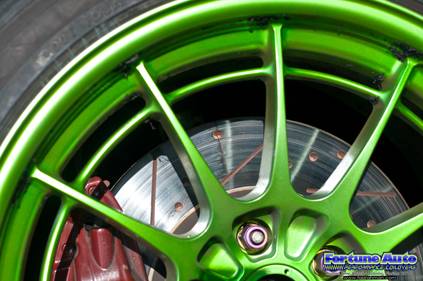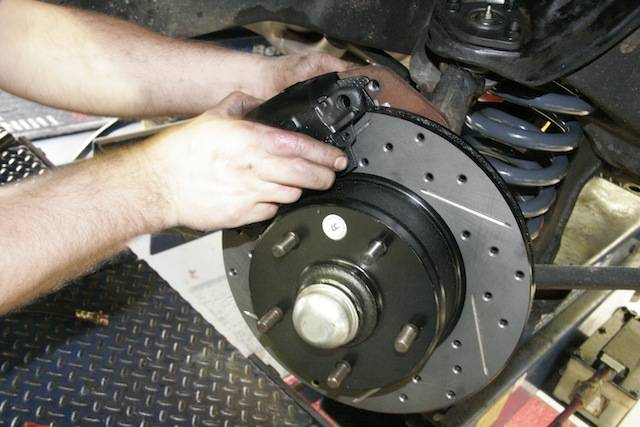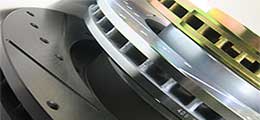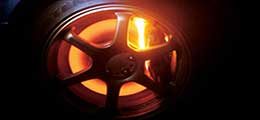
The benefits of using drilled brake rotors vs.stock blanks are many, but drilled rotors have their drawbacks as well. While a drilled brake rotor will cool much easier than a standard blank rotor or slotted rotor, the drill sites are prone to cracking.
There are different techniques for drilling a brake rotor, and later honing it to perfection, to prevent the chance of a crack, and we will discuss these techniques in this article.
First of all, we are going to explain exactly what causes a rotor to crack.
If you have ever taken a glass and heated it up, then quickly put itunder some cold water, then you may have witnessed “temperature change” stress cracking. This is essentially what happens to a brake rotor when it cools down too fast after becoming superheated. The stress of cooling quickly forms irregularities in the molecular structure of the metal and creates the potential for a crack to occur.
Normally, the crystalline structure of iron is fairly uniform, but when an outside force has altered this structure, (drilling) this pattern is modified. The probability of a crack that stems from a deformed drill site during rapid cooling is high, but can be negated if a proper patch-over of the drill site edges is completed.
When a rotor is drilled out at the factory, it often leaves jagged or otherwise microscopic fractures in its plate, in which cracks may originate. No drill bit can ever leave an unflawed drill site, so don't waste your time searching for one.

* source: chevyhardcore.com
Because these fractures are standard on any drilled out rotor during milling, fining of these edges is mandatory. How this process is under taken will vary, depending on the manufacturer.
Some brake rotor mills utilize special chamfering equipment to hone the edges to a perfect finish, while others simply offer a quick once-over with crude refinement tools. The difference between the two processes makes a world of difference, because a rough edge can affect brake pad integrity. If a brake pad catches the drill site edge aggressively, it will chew up the brake pads in question, and cause the rotor to degrade.
If you purchase a brake rotor from a reputable company, then proper edging will have been completed as standard. Rounded edges actually reduce the chance of cracking as a side benefit to conserving the brake pad itself.
*As a rule of thumb, you do not need to worry about drilled rotors cracking unless you plan on heating your brake rotors to a glow on a regular basis.
The added risk of a brake rotor cracking upon rapid cooling is negligible overall, and should not stop you from using them for your street vehicle. Drilled rotors keep metal temperatures down and reduce the chance of brake pad glazing and rotor warping. For this, drilled rotors are the overall best choice for street performance.









